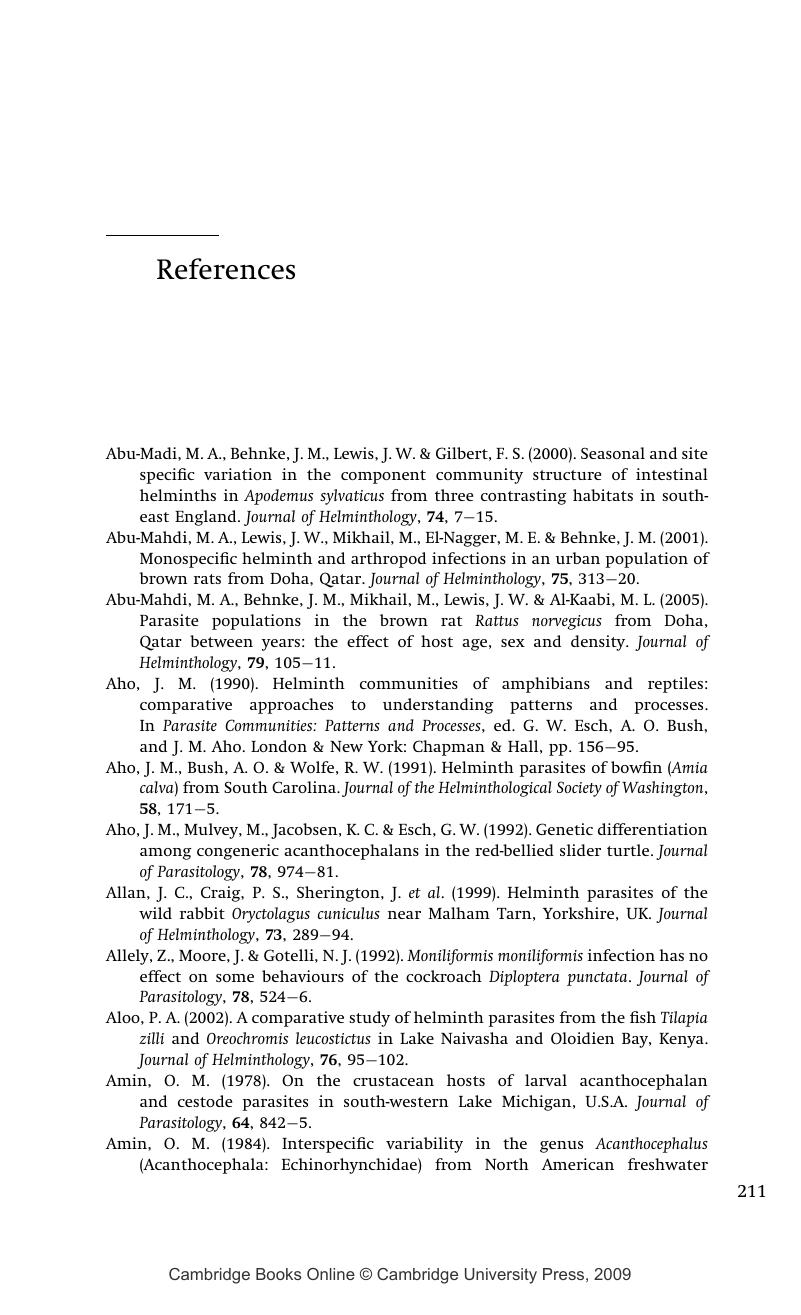Book contents
- Frontmatter
- Contents
- Preface
- 1 Introduction
- 2 Life cycles and transmission
- 3 Biogeography and distribution
- 4 Specificity
- 5 Host–parasite interactions
- 6 Population dynamics
- 7 Community dynamics
- 8 Introductions and extinctions
- 9 Relations to ecosystem changes
- 10 Conclusions and overview
- References
- Index
- References
References
Published online by Cambridge University Press: 12 August 2009
- Frontmatter
- Contents
- Preface
- 1 Introduction
- 2 Life cycles and transmission
- 3 Biogeography and distribution
- 4 Specificity
- 5 Host–parasite interactions
- 6 Population dynamics
- 7 Community dynamics
- 8 Introductions and extinctions
- 9 Relations to ecosystem changes
- 10 Conclusions and overview
- References
- Index
- References
Summary

- Type
- Chapter
- Information
- Ecology of the Acanthocephala , pp. 211 - 240Publisher: Cambridge University PressPrint publication year: 2006



